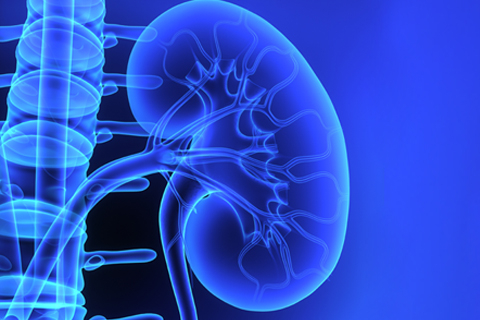Defining Urinary Tract Infection: Why Standardization Matters for Research and Care
Defining Urinary Tract Infection: Why Standardization Matters for Research and Care https://pediatricsnationwide.org/wp-content/uploads/2020/01/AdobeStock_72248222-1024x683.jpg 1024 683 Pam Georgiana Pam Georgiana https://pediatricsnationwide.org/wp-content/uploads/2023/07/May-2023.jpg
Urinary tract infections (UTIs) are one of the most common bacterial infections worldwide, affecting an estimated 150 million people annually and costing more than $5 billion in the United States alone. However, despite their prevalence, there is still no universally accepted definition of what constitutes a UTI. This lack of clarity complicates both research and clinical care.
In a recent Journal of Pediatric Urology editorial, Christina B. Ching, MD, a physician in the Department of Pediatric Urology at Nationwide Children’s Hospital, and colleagues from the European Society for Paediatric Urology Research Committee (ESPU-RC), of which she is a member, call for a standardized approach to defining UTI in clinical research.
The Problem with Words
A search for “urinary tract infection” reveals a wide array of conflicting terms, including pyelonephritis, cystitis and prostatitis. There are also confusing definitions of criteria, such as simple versus complicated, typical versus atypical and acute versus chronic. The complexity deepens as descriptions shift across patient populations, from adults to children or in patients with neurogenic bladders or with indwelling catheters.
“These variations in how we describe UTIs are more than semantic,” Dr. Ching explains. “They directly affect how we design studies, interpret results and, most importantly, diagnose and care for patients.”
Why Clear Definitions Matter
The editorial builds on the Research Committee’s presentation at the ESPU annual meeting in 2024 in Naples Italy. The authors point out that unclear terminology harms research quality and complicates the application of results in clinical practice.
Without consistent inclusion criteria and clearly defined populations, comparing findings across studies becomes nearly impossible. Researchers may reach conflicting conclusions simply because they are studying different patient groups under the same label.
The problem extends beyond clinical trials. Even animal and experimental models of UTI often use poorly described criteria. This limits their relevance to human disease.
“Words matter,” says Dr. Ching. “If we are not deliberate about how we define infection, we can not build the kind of evidence needed to guide better diagnostics and treatments.”
Implications for Clinicians
Despite multiple society treatment guidelines spanning pediatrics, urology, obstetrics/gynecology and infectious diseases, the criteria for diagnosing and managing UTIs also differ widely, often creating confusion for providers.
In pediatrics, diagnosis can be particularly challenging. Younger patients often cannot describe their symptoms. This means clinicians must pay attention to nonverbal cues or general, nonspecific signs, such as fever and poor feeding.
“Providers need to look at the whole picture,” Dr. Ching notes. “Symptoms, the method of urine collection and lab results all matter. No single test defines a UTI, so doctors should provide a clear explanation of how they make a diagnosis.”
What to Standardize
Acknowledging that criteria may vary by clinical context, Dr. Ching and fellow authors refrain from prescribing a single definition for UTI. However, they do call for greater transparency and consistency in describing the elements used to research, test and diagnose the infection. At a minimum, these should include:
- Symptoms: Use age-appropriate indicators, such as fever, irritability or failure to thrive in infants, and urinary frequency, urgency, pain or burning for older patients.
- Urine collection method: Clearly state how urine is collected, such as via catheterization, clean catch, or by bag, because the method influences interpretation.
- Laboratory findings: Specify urinalysis results including microscopy and culture data, including bacterial thresholds and evaluation methods (standard culture versus next-generation sequencing).
A Call for Clarity and Collaboration
The consequences of inconsistent definitions are far-reaching. They influence diagnostic accuracy, treatment decisions and the ability to determine when further evaluation is needed. As a result, both patient outcomes and progress in research suffer.
Dr. Ching and her ESPU-RC colleagues advocate for clear and comprehensive UTI criteria and inclusion parameters in future studies. A standardized approach will improve the comparability of research. It will also strengthen evidence-based guidelines and enhance care for patients of all ages.
“Recognizing the variability is the first step,” says Dr. Ching. “The next is to be transparent and thoughtful in how we describe infection. Only then can we build the evidence base that leads to better patient care.”
References:
Ching CB, Garriboli M, Braga LH, Dönmez MI, Haid B, Harper L, Nelson C, Nieuwhof-Leppink A, Rosoklija I, Cascio S. Developing a standardized approach to defining urinary tract infection is critical to clinical research. Journal of Pediatric Urology. 2025;21(4):823-825. doi:10.1016/j.jpurol.2025.01.039
About the author
Pam Georgiana is a brand marketing professional and writer located in Bexley, Ohio. She believes that words bind us together as humans and that the best stories remind us of our humanity. She specialized in telling engaging stories for healthcare, B2B services, and nonprofits using classic storytelling techniques. Pam has earned an MBA in Marketing from Capital University in Columbus, Ohio.
- Pam Georgianahttps://pediatricsnationwide.org/author/pam-georgiana/
- Pam Georgianahttps://pediatricsnationwide.org/author/pam-georgiana/
- Pam Georgianahttps://pediatricsnationwide.org/author/pam-georgiana/
- Pam Georgianahttps://pediatricsnationwide.org/author/pam-georgiana/
- Post Tags:
- Urinary Tract Infection
- Urology
- UTI
- Posted In:
- Clinical Updates
- In Brief
- Research









